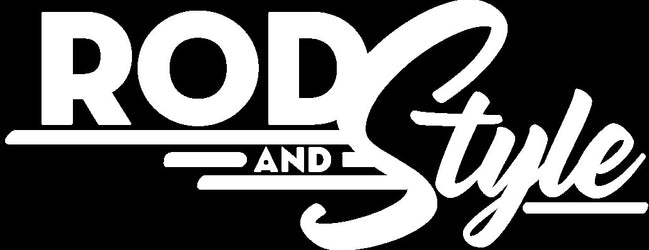Free U.S.A. Shipping on Orders over $100 (excluding print on demand items)

Adding Juice Brakes to a Model A Part 2
Make sure to check out all of our killer merch...click here!
Story and Photos by Zac Parks
Check out more from Zac on his Instagram Account: @wiredcustoms.va
If you're contemplating adding Juice Brakes to your Model A in a traditional style and you have the front brakes figured out, then your next move is to plan for the rear brakes. If you read part 1 of this series, you heard me say this can be a real rabbit hole, and the rear brakes are no exception. We could talk about Buick, F1 and F100s and really confuse you, instead I am going to keep it simple as I can when giving you a few options.Since Ford started installing Juice brakes in 1939, then you'll need to find backing plates from 1939-1948 passenger vehicles. There are more options than that to be clear, but these options are the easiest to deal with.
The Early backing plates 1939-1948 has the same bolt pattern as the Model A backing plates, making this a simple task. But not all the Model A hardware should be used during this conversion. If you are keeping the Model A rear Banjo then make sure to replace the Model A axle nut with the later 1946-1948 axle nut. In '46, Ford went with a larger and more beefy nut with the same thread, giving you more surface area to work with, and lets all be honest, we will be applying a little more that 24 horsepower this go around. That being said I prefer to always replace the axle key at this point also for a piece of mind.
Here comes the more technical part, of course you will need to determine the style of your build, but I want to let you know your options. When installing the backing plates, and also still using the Model A style "leaf spring over axle" the brake cylinder will hit and not cleat the spring perch. There are options for different style springs in the back of a Model A, but if you are a hardcore traditionalist like me, then coil overs aren't much of an option.

There is two options for clearing the brake cylinder, one I've seen is just slightly spinning the backing plate either clockwise or counter clockwise and re-drilling the holes in the backing plate, or flipping the backing plate upside down. Now I am not a physics teacher so I can't tell you which ones is better but I can tell you which one I've done personally and which one I've seen more often than the other which is turning the backing plates upside down.

The rear backing plates are front and back specific because of the parking brake cable, so if you're going to flip them, then you will also have to change them side to side to the parking brake cable is facing forward. Also the brake cylinders have a front and back to them as well. In side of the brake cylinders we have a small cylinder and a large cylinder, the large cylinder is suppose to face forward. You have a couple options here, you either can change the side specific brake cylinders around so the large cylinder is forward or, you can re-drill the backing plate to allow you to flip the brake cylinder back the correct way up.

When I say flip them right side up I mean having the bleeder above the inlet for the brake line. If you choose to switch the brake cylinders from side to side instead of flipping them right side up, you will have to vacuum beed the brakes, the old school way of pump and hold will not get all the air out.
After bashing your head into a wall from reading this I hope the pain recedes and you find the way that best works for you! Now stop reading articles and get back into the garage and Get Your Shift Together!


Comments
Leave a comment